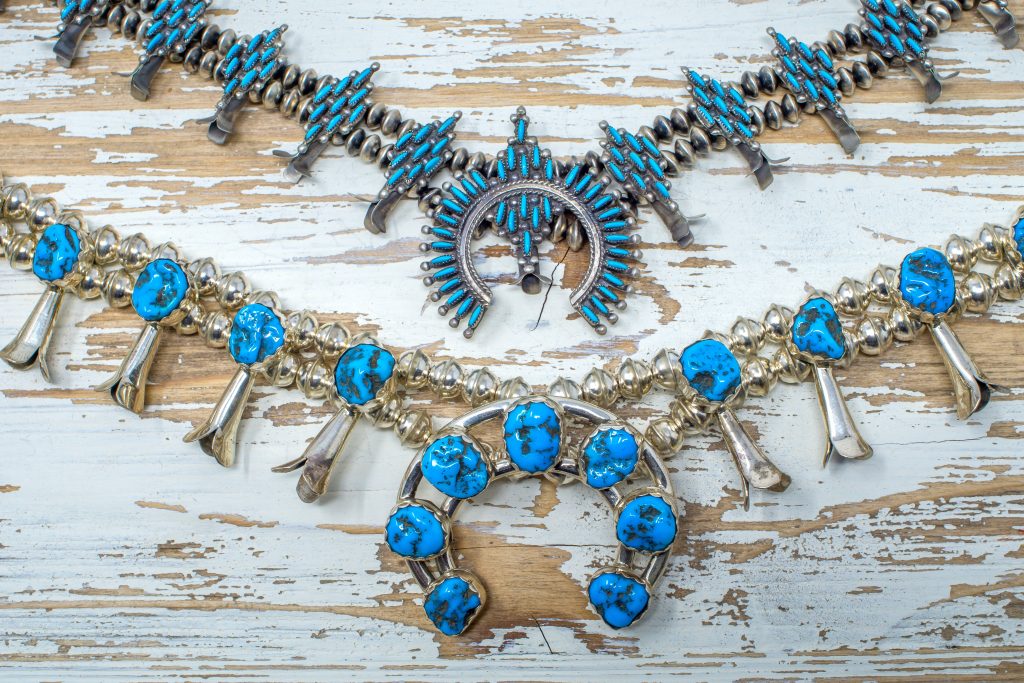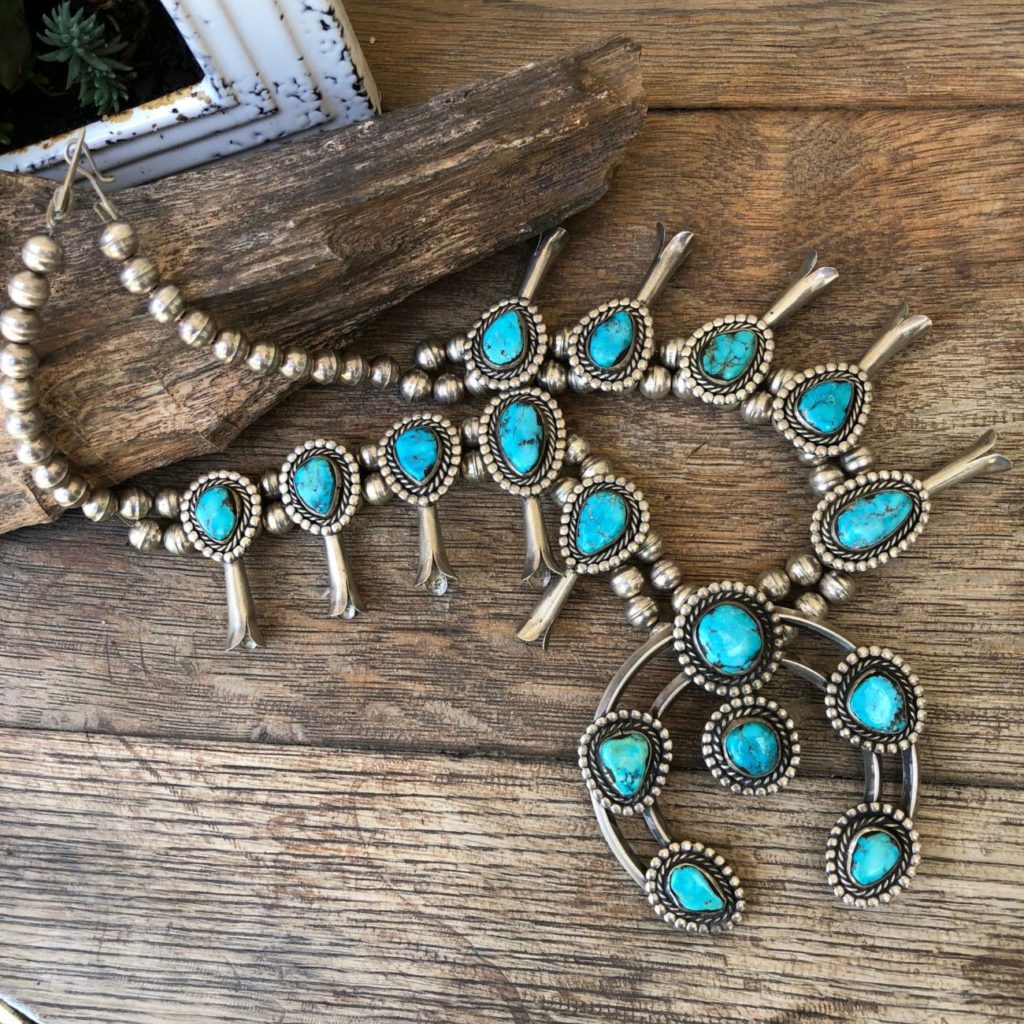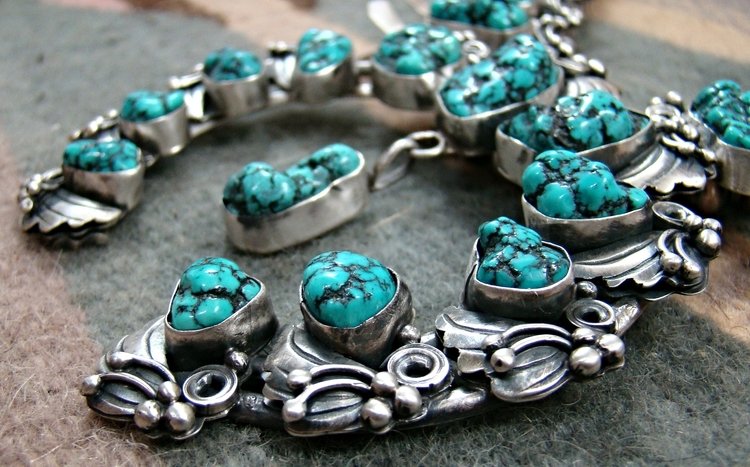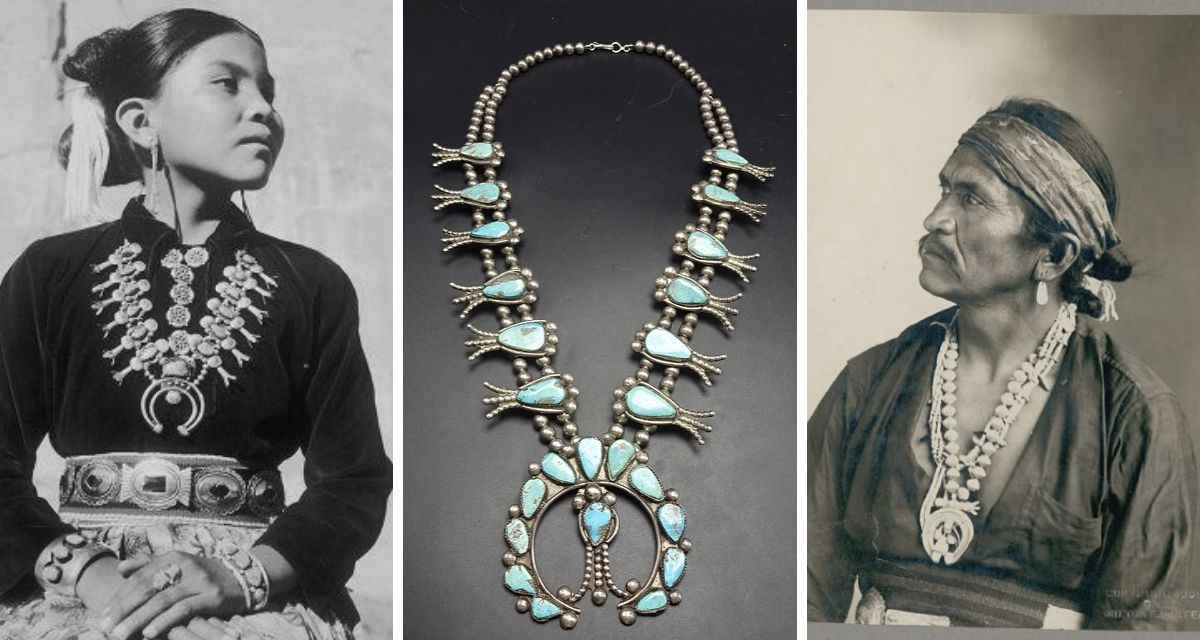Reality is stranger than fiction.
Time and time again, we are confronted with facts that shake our understanding of the world and lead us to think that even someone with the most imaginative mind could not have come up with such fantasy. But why is that relevant to the squash blossom?

Photo to credit to Pickle Barrel Trading Post
The humble flowering part of the squash fruit is known as squash blossom. It spreads outwards and is used for cooking purposes. But that’s not the squash blossom we are talking about here. This article is actually focused on the Native American piece of jewelry by the Navajo.
The History of Squash Blossom Jewelry
Before we can enlighten you about the history of this piece of jewelry, it is imperative to understand its basic shape and make. The center of attention is the inverted crescent or the Naja. It is surrounded on both sides by six flowering beads which are the only part on this piece of jewelry that resembles their namesake.
The inverted crescent or Naja is a Navajo symbol but as we said before, its history and origins are actually much more interesting. The inverted crescent has been used as a pendant and talisman for protection against the evil eye and evil forces or as a symbol of prestige by many civilizations. From the Paleolithic to the Romans and Cretans, it was used in a number of places.
The inverted crescent is also prevalent in the Middle East. From here, the Muslim Moors brought it with them as a ward against the evil eye into Spain. Coupled with the long centuries of Muslim rule over Spain, the symbol eventually entered the cultural consciousness of Spain. From Spain, it traveled with the conquistadors to South America where it left an impression on local tribes and peoples, eventually spreading in their ornaments and jewelry until it came to be strongly associated with them.

Photo credit to YourGreatFinds.net
That is quite an interesting journey for an upside-down crescent to have. As for the six flowers on each side, there are competing theories —each of which is more interesting than the last. Some say they have more to do with pomegranate shaped ornaments of the Spanish which were impressed upon the Navajo while others say they were inspired by the local squash blossom which was a very important and widespread crop for the Navajo.

Photo credit to Eagle Rock Trading Post
Similarly, there are competing views about the origin of the name, which are either a result of losses in translation or deliberately based on the flower. Whatever the truth behind these theories, one thing is true. Despite its use by other civilizations, the squash blossom held and holds no spiritual or ritual significance. Instead, it was a marker of cultural and social prestige, reputation and wealth for the Navajo and is often made with precious metals and gemstones.
All this might have been much more information than you bargained for when searching for squash blossoms and whether you should get one. With this information, however, you can have a deeper appreciation for the squash blossom and other pieces of jewelry of the Navajo along with the forces and cultures which made them possible.
Last Updated on 01/06/2020 by Aaron Kuhl
CLN Community Sponsor












